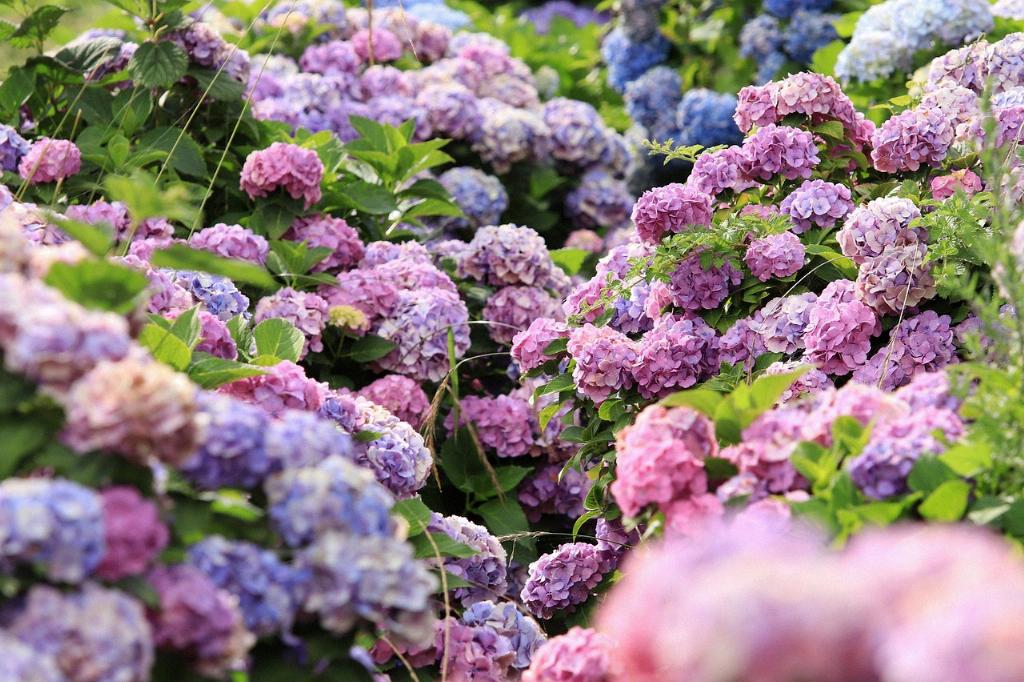Trimming hydrangeas can be a beneficial practice to promote new growth and maintain the health and appearance of your plants. Knowing when and how to trim your hydrangeas is crucial to ensure that you don’t inadvertently harm them. Here are some guidelines to help you determine the best time to trim your hydrangeas.
1. Understanding Hydrangea Types
Before you start trimming your hydrangeas, it’s essential to understand the type of hydrangea you have in your garden. Different hydrangea varieties may require trimming at specific times to encourage healthy growth and abundant blooms.
2. Trimming Bigleaf Hydrangeas
For bigleaf hydrangeas, it’s recommended to trim them back to a set of healthy buds after the flowers have faded, typically in late summer. This timing allows the plant to rejuvenate and prepare for the next growing season.
3. Sharp and Clean Trimmers
When trimming hydrangeas, always use sharp and clean trimmers to make precise cuts. Cutting stems just above a pair of leaves helps promote new growth and encourages a fuller appearance in your hydrangea plants.
4. Heavier Prune in Winter
During the winter months, consider a heavier prune for your hydrangeas by removing any gray, older, or dead stems. This practice can help improve the overall health and vigor of your plants for the upcoming spring season.
5. Early Spring Trimming
Some hydrangea varieties benefit from early spring trimming to remove any damaged or weak branches caused by winter conditions. Trimming during this time can help stimulate new growth and ensure a bountiful display of blooms in the summer.
6. Avoid Late Fall Trimming
Avoid trimming your hydrangeas in late fall as this may remove potential buds for the following year’s blooms. Late fall trimming can disrupt the natural growth cycle of the plant and lead to reduced flowering in the next season.
7. Assessing Plant Health
Before trimming your hydrangeas, take the time to assess the overall health of the plants. Remove any diseased or damaged branches to prevent the spread of infection and promote the plant’s vitality.
8. Pruning Overgrown Hydrangeas
If your hydrangeas have become overgrown or dense, consider a rejuvenation prune to encourage new growth and maintain a manageable size. This pruning technique can help reshape the plant and promote better air circulation.
9. Optimal Trimming Frequency
Hydrangeas typically benefit from annual trimming to remove old growth and encourage new shoots to develop. Regular trimming can also prevent the plant from becoming overly leggy or crowded, resulting in a healthier and more attractive appearance.
10. Consulting Gardening Resources
If you’re unsure about the best time to trim your hydrangeas or the proper pruning techniques to use, consider consulting gardening resources or local horticultural experts for guidance. They can offer valuable insights tailored to your specific hydrangea variety and growing conditions.
11. Careful and Prudent Trimming
When trimming your hydrangeas, always proceed with care and prudence to avoid damaging the plants. Make deliberate cuts and regularly inspect the branches for any signs of disease or pest infestation that may require immediate attention.
12. Enjoying the Results
After trimming your hydrangeas according to the recommended guidelines, sit back and enjoy the results as your plants flourish and bloom throughout the season. Proper trimming can enhance the overall beauty of your garden and ensure that your hydrangeas thrive year after year.

